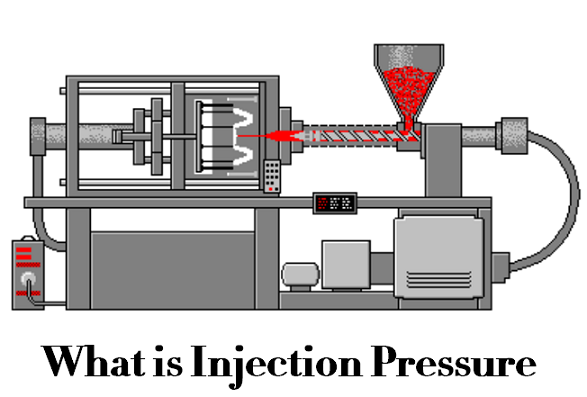Pressure is an essential element during the injection molding process, there are multiple pressures are applied in different stages. In this article, let’s get into the definition of injection pressure, how it affects the process, and different types of pressure in injection molding.

What is Injection Pressure?
Injection pressure refers to the force applied by the screw to push molten plastic material into a mold cavity. It is balanced against the clamping pressure of the machine. Injection pressure is the melt pressure at the head of the screw during the injection. The injection pressure is used to overcome the resistance of the molten material from the barrel to the cavity, give the material a certain filling rate and compact it. Injection pressure can be measured by a sensor on the nozzle or hydraulic pipeline. It has no fixed value, and the more difficult it is to fill the mold, the higher the injection pressure.
Injection molding is the process of filling the mold cavity with hot material flow. In theory, if we do not consider the product surface defects and mold factors, the faster the filling speed, the better. However, because the molten material produces resistance (pressure in the mold cavity) in the process of flow, with the existence of the internal pressure resistance in the mold cavity, the machine must provide a power greater than or equal to this resistance (hydraulic pressure during injection) to force the molten material flow into the mold cavity, that is, the injection action is also an action to overcome the resistance. Is this injection pressure constant from the beginning to the end of injection? Definitely not, even if it’s a uniform injection. As the material flow fills the mold cavity, its contact surface is expanding, that is, its stress area is expanding, so the injection pressure is changing during the uniform injection.
Injection Pressure and Injection Rate
In order to ensure the quality of products, there are often certain requirements for the injection rate, and the direct factor affecting the injection rate is the injection pressure. In terms of mechanical strength and shrinkage of products, each product has its own optimal injection rate, which is often a range of values. This value is different from many factors and is often determined by experiments. However, the most important influence is the product wall thickness. From a qualitative point of view only, thick-walled parts require a low injection rate. Generally speaking, with the increase of injection pressure, the orientation degree, weight, weld joint strength, material flow length and cooling time of the product increase, while the shrinkage and thermal deformation temperature in the material flow direction decrease.
Different Types of Pressure in Injection Molding
– Holding pressure: used to finish the filling of the mold and pack of the plastic part, it is required until the gate freezes off. Hold pressure equals to 50% of injection pressure.
– Clamping pressure: also known as clamping force, which keeps the mold closed against injection pressure, it is more than injection pressure to prevent the mold open during the injection stage.
– Back pressure: created during the return action of the screw after injecting material. The back pressure varies with the design of screw, the requirements of product quality and the type of plastic.
– Cavity pressure: when molten metal enters into the mold cavity impression with the force of injection, it generates reverse force against injection pressure, try to open the mold, the force is called cavity pressure. It acts maximum at gate point.
– Line pressure: also known as system pressure or gauge pressure, the pressure present in the main supply line from the pump.
– Nozzle contact pressure: the pressure act between the nozzle and sprue bush in the parallel direction of injection, it must counteract whatever injection pressure the machine can produce. Higher injection pressure requires higher nozzle contact forces for machines of any size. Generally, nozzle contact pressure requires 4 to 10 tons of force.
